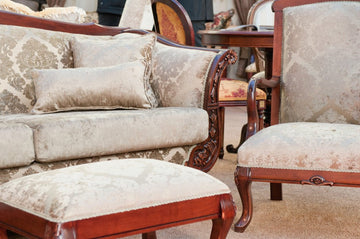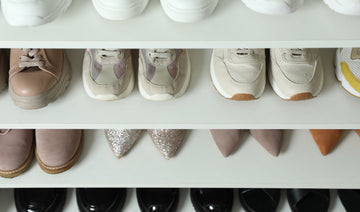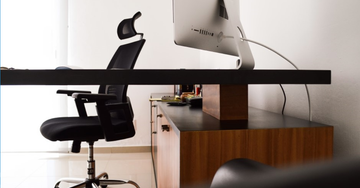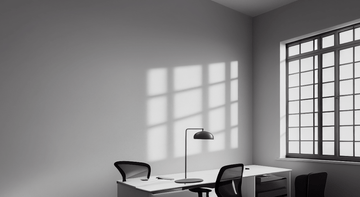
Keeping your furniture clean sounds simple, but is it really? Different materials demand different care, and using the wrong method can do more harm than good. That is why learning the best way to clean furniture is more important than most people think.
From leather sofas to wooden tables, each type of furniture has its own quirks. A quick wipe might work on glass, but on upholstered fabric or antique wood? That calls for extra attention.
This guide walks you through practical furniture cleaning tips that go beyond the basics. You will discover how to clean furniture safely, protect it from damage, and keep every piece looking its best.
Before You Start: Why General Cleaning Isn't Enough

A quick dusting or a wipe with a damp cloth may make your furniture look spotless. But appearances can be deceiving. Using the wrong cleaning method can actually do more harm than good.
Take a general spray cleaner, for example. It might work well on glass, but on wood it can leave streaks, and on leather it can cause the surface to dry out.
Different materials react in unique ways to dirt, moisture, and cleaning products. Wood, for instance, is highly sensitive to excessive moisture. According to ASTM research, too much water exposure can lead to swelling, warping, cracking, or even failure of bonded joints.
Metals also have their vulnerabilities. Studies show that exposure to high humidity and common household chemicals, such as vinegar or bleach, accelerates corrosion. This means that even sturdy parts like screws, legs, and frames may weaken far sooner than expected if cleaned improperly.
Finally, leather, among the most favorite furniture materials, also requires special care. Research on upholstery leather finishes revealed that certain cleaning products can break down protective coatings, resulting in fading, tackiness, or surface cracks.
That is why there is no one-size-fits-all approach to furniture cleaning. To truly protect your investment, each material needs a cleaning method designed for its specific surface.
In the next sections, we will cover the proper cleaning methods for every type of furniture material.
How to Clean Wooden Furniture

Wood is timeless and beautiful, but it is also one of the most delicate materials when it comes to cleaning.
Wood furniture benefits most from a consistent cleaning routine. Dust at least once a week using a soft, dry microfiber cloth to prevent buildup.
For deeper cleaning, aim for once a month. Most modern pieces have polyurethane finishes that can handle a mild soap solution. Mix a few drops of dish soap with warm water, dampen a soft cloth, and gently wipe the surface. Immediately dry with another cloth to avoid moisture damage.
Antique pieces with shellac or lacquer finishes require gentler care. Instead of soap, simply wipe with a slightly dampened cloth, followed by drying. This prevents the finish from softening or clouding.
Polishing is best done every three to six months. Use a polish designed for wood finishes and apply with a soft cloth, following the grain. Avoid silicone-based products, as they can leave buildup over time.
How to Clean Metal Furniture

Metal furniture is sturdy and often low-maintenance, but it has a weakness: rust.
Regularly wipe down surfaces with a damp cloth and mild soap, then dry thoroughly. This simple step prevents moisture from lingering and corroding the finish.
If the furniture needs a deep cleaning, you can use an old toothbrush and soapy water. Scrub dirt from corners, joints, and textured surfaces. Always make sure the piece is completely dry afterward.
It is also important to monitor the condition of the surface paint. Iron and steel rust quickly where finishes are chipped or worn. If much of the paint is flaking, pressure wash the piece, allow it to dry, and refinish with rust-resistant paint.
For long-term protection, especially for outdoor pieces, apply a thin coat of car wax or a rust-resistant spray every few months. This helps shield the surface from rain and humidity, extending its lifespan.
How to Clean Leather Furniture

As mentioned, leather materials demand special care. Dust weekly with a soft cloth to prevent dirt from settling into the surface.
For deeper cleaning, mix a 50/50 solution of vinegar and water. Dampen a microfiber cloth, then rub the leather in circular motions to lift dirt from the natural fibers.
Remember, do not soak the material; just lightly dampen it to loosen grime. Once clean, wipe with a dry cloth and allow the leather to air out. This is important step, especially on frequently used pieces like leather chairs.
How to Clean Fabric Upholstery

Fabric upholstery adds warmth and comfort, but it easily absorbs dirt, dust, and spills. Start with vacuuming at least once a week to lift crumbs and surface dust. This simple habit keeps allergens at bay and prevents buildup.
For stains, spot-clean gently with a mild fabric cleaner or a mix of water and gentle soap. Always test in an inconspicuous area first to ensure no discoloration occurs.
Many upholstery fabrics include cleaning codes W, S, WS, and X on their tags. These indicate the safest cleaning methods:
- W means you can use water-based cleaners.
- S means use solvent-based cleaners only (no water).
- WS means both water- and solvent-based cleaners are safe.
- X means vacuuming only—professional cleaning is recommended for stains.
Find these codes in the fabric to prevent accidental damage.
How to Clean Wicker and Rattan

Wicker and rattan pieces are among the hardest furniture materials to clean. Their woven design tends to trap dust and dirt.
We recommend regularly dusting with a soft brush or vacuuming with a brush attachment to reach into the crevices. You can also use soapy water for deep cleaning. However, make sure the cloth is well wrung out, since too much moisture can weaken the fibers.
After cleaning, allow the furniture to dry completely in a shaded, well-ventilated area to prevent warping.
Create a Furniture Cleaning Schedule
When it comes to furniture maintenance, consistency always pays off. Establishing a routine will help extend your furniture’s lifespan.
- Weekly: Dust all surfaces with microfiber cloths, vacuum upholstery, and address spills immediately.
- Monthly: Deep clean your furniture (if needed). Rotate through your collection to minimize stress and achieve more precise results.
- Quarterly: Condition leather pieces, polish wood furniture, and perform thorough upholstery cleaning.
-
Annually: This applies to antiques and high-value furniture pieces. Don’t hesitate to ask for a professional inspection and cleaning to protect your valuable piece.
Your Furniture Deserves Better Care
Every material tells its own story, and each requires a different approach. Understand each piece and its unique needs.
With the right cleaning routine, your furniture will return the favor by staying beautiful and functional for years.
One last tip: always test cleaning solutions on hidden areas first, and when in doubt, seek professional help for valuable or antique furniture.
If you're looking to upgrade or replace well-loved pieces, feel free to browse our furniture collection or visit our official stores on Shopee and Lazada.









